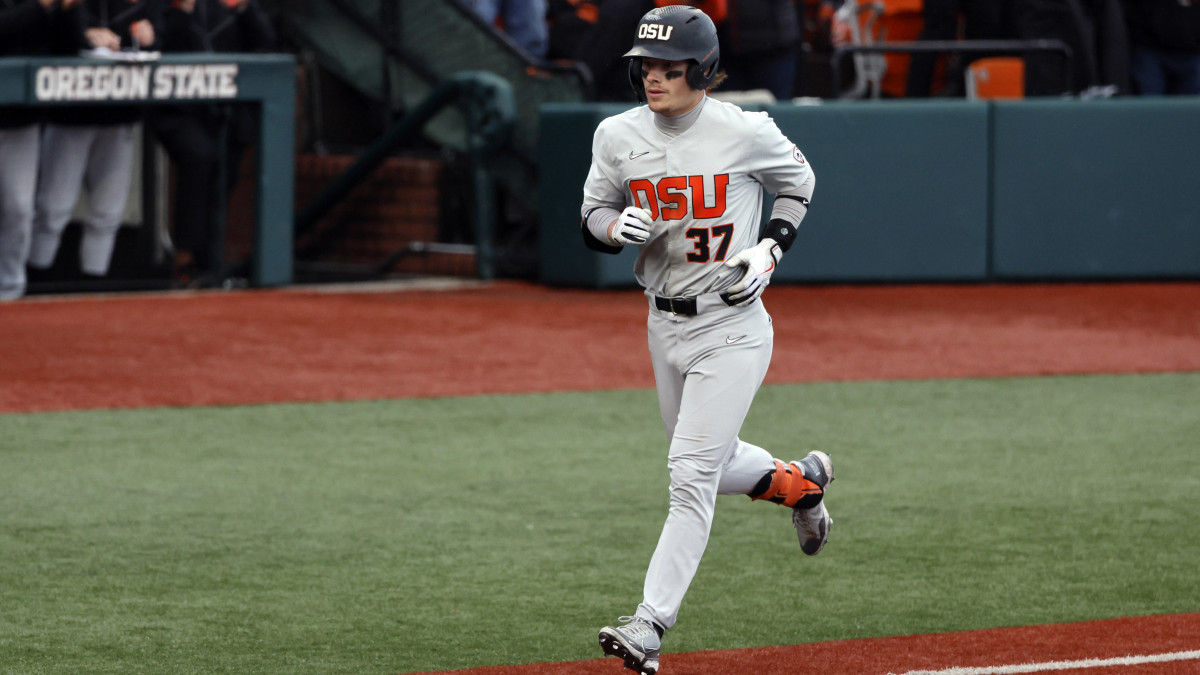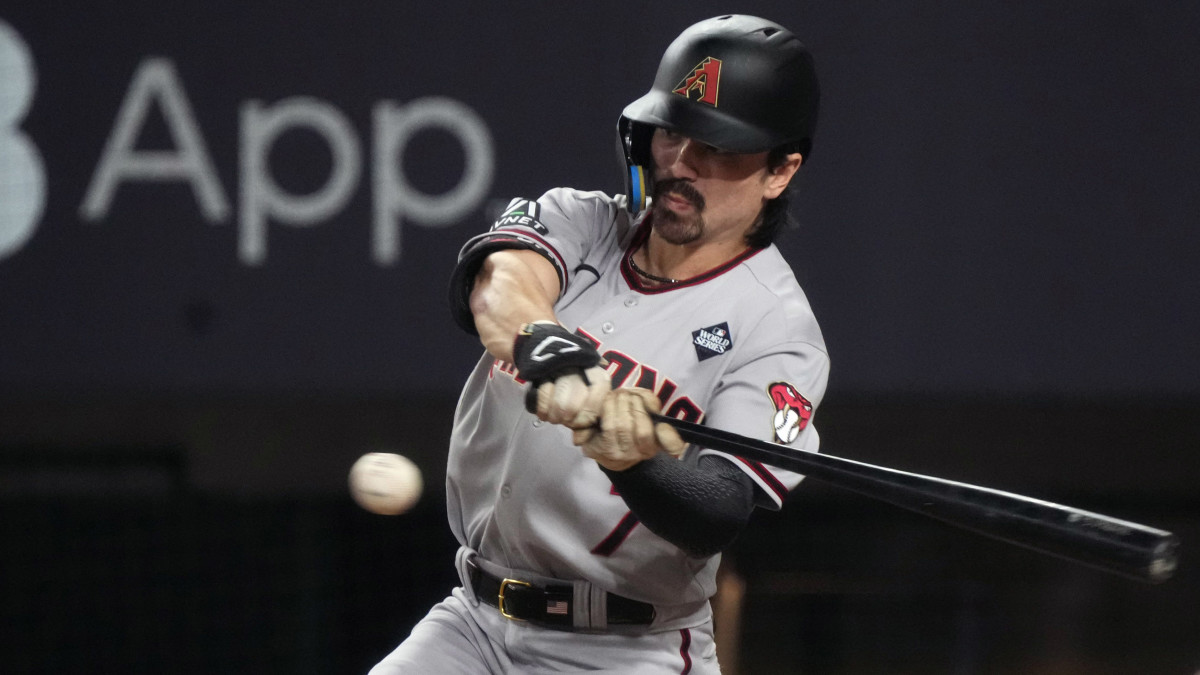From Australia to the MLB Draft: Travis Bazzana’s Journey to a Potential No. 1 Pick

His name is Travis Bazzana. You can call him “Bazz,” as his Oregon State teammates do. You can call him “The Wonder from Down Under” or the “Bazzmanian Devil,” as the sometimes fact-bending creatives on the internet do. (Actually, he is from Sydney, in the state of New South Wales, not Tasmania.) But soon you just might be calling him one of the more unconventional No. 1 picks in the history of the MLB draft.
A second baseman for Oregon State, Bazzana is playing himself toward the top of the draft with a game that best compares to Corbin Carroll of the Arizona Diamondbacks and a backstory with enough unexpected turns to rival The Thorn Birds. Bazzana is a former wicketkeeper/opening batsman and captain of his high school cricket team, a psychology major, meditation devotee and an analytics and tech-savvy self-taught hitter who might well be on his way to fulfilling his lofty preseason goal.
“To be honest, my goal at the start of the season was to be the best hitter in college baseball,” Bazzana told me and former manager Joe Maddon on our podcast, The Book of Joe. “Really, it’s about my process and going about it and believing I can be the best hitter in the country. I think the draft takes care of itself.”

No second baseman has ever been selected with the first pick. Only one second baseman has been drafted among the first six picks: Rickie Weeks Jr. went No. 2 to the Milwaukee Brewers in 2003.
No Australian has been drafted in the first two rounds. Australians can become international free agents at 16 and are not draft-eligible unless they move to the United States, Canada or a U.S. territory. Bazzana decided when he was 14 years old to take the rare path from Australia to major college baseball to become draft-eligible. His story is an example of how the world has become a smaller place with access to so much information and training aids.
“I’m a 14-year-old in Australia,” Bazzana says, “and with the internet and social media I’m seeing these kids my age already committed to Power 5 schools and all the top kids in the world that I’m comparing myself to back in Australia are already committed to top colleges and I’m like, ‘I should probably look into this.’
“The Australians that went to colleges generally went to junior college. If they went to Division I, it was usually a small or mid-major. The advice to me for the most part was that I should seek out a junior college and get playing time and kind of move on from there. But lucky enough, I had some good mentors that told me they’ve seen a lot of American kids, and they think I can go to a quality Division I college.”
Oregon State offered him a scholarship upon seeing him play at a tournament in the States. He was remarkably polished for someone with limited game experience compared to his American counterparts. As a freshman, Bazzana slashed .306/.425/.476. As a sophomore, he improved to .374/.500/.622 and was the MVP of the Cape Cod League. This year entering this week he was slashing an incredible .438/.585/.979.
The numbers reflect his constant search for improvement. After his freshman season, for instance, he launched a deep analytic dive into his hitting profile and found his chase rate went up when the count was in his favor, an indication of being overeager.
As a sophomore, after studying the vault leads of New York Yankees shortstop Anthony Volpe, he stole a school record 36 bases.
This year his power has soared as he learned how to backspin the ball to the pull side.
“It’s been a process of getting as many reps as I can,” he says. “Like when the ball’s on the inner half, being able to hold my posture like almost downhill ... Keep this frontside downhill versus ripping up to the ball to get it to create space. So, creating space in my setup and my move to where I can then just trust a rotation and be flat through that inside pitch.”
The cricket captain for Turramurra High School said he was always more dedicated to baseball than cricket. But Australia offered few competitive baseball options. While elite American teenage players can find well more than 100 high-level games over any year, Bazzana estimated, “I was playing maybe 30, 35 games. And some years it was probably less. But half of those games were more uncompetitive because they were sort of scrimmage games.”
The solution for Bazzana was to intensify his training. He created game scenarios in his drills. He studied the swings of major league players on video. He cranked the velocity of pitching machines. He started playing on Saturdays in the Australian Baseball League when he was 15–against men in their 20s and 30s.
“Those games became valuable to me because you’re not playing every day or doubleheaders multiple times a week,” he says. “It was like, ‘I’m preparing the whole week for the game on Saturday and I’m going to go out and give it my all and care about every single pitch every single at-bat.’ ”
Bazzana, 5 '11" and 200 pounds, developed a somewhat quirky but powerfully efficient swing. In his set position he lays the bat flat behind him, then as he raises it to the loaded position, he brings his front knee up to nearly waist high. The key is that Bazzana remains perfectly balanced during that load phase. As the foot lands he unwinds with a highly connected swing in which his hands remain close to his body.
“Everything comes from feel,” he says. “I didn’t have a hitting coach growing up. It was all going to the cage and feeling things and trying things. Trying drills from a super young age that I saw on the internet. Trying to hit like big leaguers that I watched their highlights from that day when I went to the cage that night.”

I told Bazzana about the hitter I immediately thought about when I watched him hit: Carroll. Both are left-handed, both have some quirkiness in their initial phase of the swing, both compress the ball with startling power without having long levers and both are plus-plus runners.
“That’s, honestly, probably one of my favorite comps I’ve ever gotten because right now in the game Corbin is one of my favorite players,” he says. “He’s just a dynamic, good person on and off the field. Obviously, a lefty swing who runs. Well, I love that. I think we’re both a little bit funky in the setup and, yeah, the ability to hit the ball hard to all parts of the field and just having the right process and going out and competing and playing the game hard.
“Obviously, Corbin’s a major league star, so I’m not going to say I’m the same hitter as Corbin, but yeah, he’s someone whose swing I watch. Right now for me it’s probably Corbin and Juan Soto. They’re probably my two main guys when I look up to big league hitters.”
The first three picks of the draft belong to the Cleveland Guardians, Cincinnati Reds and Colorado Rockies, in that order. With his swing, his baseball intellect and his desire to keep improving, Bazzana is going to hit—period. He is a low-risk pick.
The top of the draft appears thick with college bats. Among others the Guardians can consider at No. 1 are Jac Caglianone, a first baseman/left-handed pitcher from Florida; Nick Kurtz, a first baseman/outfielder from Wake Forest; and JJ Wetherholt, a middle infielder from West Virginia.
“I really can’t control what it comes down to,” Bazzana says. “Whether teams try to pick the best player on the board or whether they offer multiple guys and they have a value of someone else or there’s a pitcher throwing a hundred that dominates his conference.
“Really, it’s about my process and going about it and believing I can be the best hitter in the country. The draft takes care of itself. I take care of my process and continuing to get better and focus on the little things and my daily tasks, doing what I need to do: continuing to work with teammates, worry about winning and giving my best effort every time in the box, every time I’m out on the field.”
